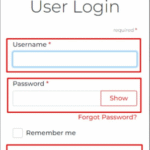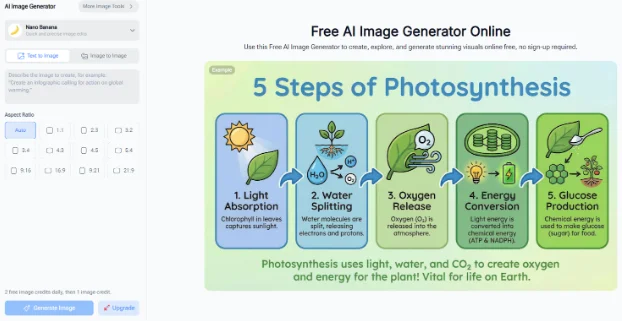Introduction
In the dynamic landscape of mobile app development, cross-platform frameworks have emerged as powerful tools, enabling developers to create applications that seamlessly run across various platforms. One such standout framework is Flutter, celebrated for its versatility and efficiency. This article delves into the world of Flutter app development, exploring its definition, advantages, and suitability for building mobile applications.
What is Flutter?
Flutter, a UI toolkit developed by Google, serves as a comprehensive solution for crafting natively compiled applications for mobile, web, and desktop from a single codebase. This framework has gained traction for its capability to efficiently target multiple platforms, streamlining the development process and fostering code reuse.
Why use Flutter?
Flutter’s allure lies in its myriad of advantages. Its robust performance ensures a seamless user experience, while the expressive UI capabilities allow developers to create visually stunning applications. The unique hot reload feature accelerates development cycles, enabling real-time updates without compromising the app’s state. Moreover, the broad community support and cost-effectiveness make Flutter an attractive choice for developers and businesses alike.
Evaluation of Flutter’s Suitability for Mobile App Development
Flutter, as a cross-platform framework developed by Google, has gained substantial traction in the mobile app development arena. Its suitability is contingent on various factors that developers and businesses must carefully evaluate to determine if Flutter aligns with the specific requirements of their projects.
1. Single Codebase Efficiency:
- Pros: Flutter’s hallmark is the ability to maintain a single codebase for both iOS and Android platforms. This not only streamlines development but also reduces the potential for code discrepancies, making updates and maintenance more efficient.
- Cons: While a single codebase is advantageous for consistency, certain platform-specific functionalities might require additional consideration and customization.
2. Hot Reload Feature:
- Pros: Flutter’s hot reload feature allows developers to make real-time changes to the code and immediately see the results without restarting the application. This accelerates the development process, fostering rapid iterations and enhancing productivity.
- Cons: In some complex scenarios, hot reload might not be as seamless, potentially leading to minor disruptions in the development flow.
3. Performance and User Experience:
- Pros: Flutter offers high-performance graphics rendering, contributing to smooth animations and a responsive user interface. This makes it suitable for applications demanding a visually appealing and interactive user experience.
- Cons: For graphics-intensive apps, Flutter’s performance might face challenges compared to native development, requiring careful optimization.
4. Community and Ecosystem Support:
- Pros: Flutter boasts a robust and active community, providing extensive support through forums, documentation, and a rich ecosystem of plugins and packages. This support accelerates problem-solving and enhances the development process.
- Cons: Despite a thriving community, some specific niche requirements may have limited pre-existing solutions, requiring additional development effort.
5. Platform-Specific Integration:
- Pros: Flutter allows for seamless integration of platform-specific features, ensuring that developers can tap into native functionalities when needed. This is crucial for applications requiring access to specific device features or services.
- Cons: Fine-tuning platform-specific integrations may add complexity to the development process, necessitating a balance between cross-platform efficiency and platform-specific optimizations.
6. Learning Curve:
- Pros: Flutter’s Dart programming language is approachable, and the framework itself is designed to be developer-friendly, reducing the learning curve for those new to the technology.
- Cons: Developers accustomed to other languages may require an initial adjustment period, and the ecosystem may have fewer resources compared to more established frameworks.
Advantages of Flutter
- Robust Performance: Flutter’s high-performance engine facilitates smooth and responsive applications, ensuring optimal user engagement.
- Expressive UI: With a rich set of customizable widgets, Flutter empowers developers to design visually appealing and user-friendly interfaces, maintaining a consistent look across platforms.
- Hot Reload Feature: Flutter’s innovative hot reload feature allows developers to instantly view the effects of code changes, enhancing productivity and accelerating the development process.
- Broad Community Support: The thriving Flutter community provides a vast pool of resources, including libraries, plugins, and community-driven solutions, fostering collaborative development.
- Cost-effectiveness: Flutter’s single-code-based approach reduces development time and effort, ultimately leading to cost savings for businesses aiming to launch on multiple platforms.
What Types of Mobile Apps are Created by Using Flutter?
Flutter’s versatility extends to the variety of mobile apps it can create. From high-performance native applications to visually stunning UIs, Flutter is suitable for a range of use cases. Developers leverage Flutter to build apps in domains such as e-commerce, social media, healthcare, and more. Notable examples include Alibaba, Google Ads, and Reflectly, showcasing the framework’s adaptability across diverse industries.
- E-Commerce Applications: Flutter is well-suited for developing dynamic and visually appealing e-commerce applications. Its expressive UI allows for the creation of seamless shopping experiences, with features such as product catalogs, shopping carts, and secure payment gateways. Notable examples include the Alibaba app, which harnesses Flutter’s potential to deliver a user-friendly and engaging e-commerce platform.
- Social Media Platforms: Flutter facilitates the development of interactive and visually stunning social media apps. Its hot reload feature accelerates the implementation of real-time updates, ensuring a dynamic user experience. Flutter’s capabilities shine through in apps like Reflectly, where it contributes to creating a visually appealing and responsive interface.
- Healthcare and Fitness Apps: Flutter’s robust performance makes it an excellent choice for healthcare and fitness applications. These apps often require high-performance graphics and real-time data tracking, areas where Flutter excels. Developers can seamlessly integrate features like health monitoring, fitness tracking, and personalized health plans into applications, enhancing user engagement and satisfaction.
- Education and Learning Apps: Flutter proves to be a valuable tool for creating educational applications. Its ability to render visually appealing interfaces aids in delivering engaging content, while the framework’s cross-platform nature ensures broad accessibility. Educational apps, such as those offering language learning or skill development, benefit from Flutter’s efficiency and consistency.
- News and Media Platforms: Flutter’s capability to create a consistent user interface across platforms makes it advantageous for news and media applications. Developers can design immersive interfaces for content consumption, including articles, videos, and multimedia elements. Flutter’s flexibility shines in apps that curate and engagingly present news content.
Is Flutter a Recommended Option for Mobile App Development?
The suitability of Flutter for mobile app development hinges on various factors. Its single codebase, hot reload feature, and broad platform support make it an attractive choice for projects with time and resource constraints. However, developers should consider the specific requirements of the application, the target audience, and the desired user experience. Flutter excels in scenarios where a consistent UI across platforms is crucial, but it may not be the optimal choice for every project. Evaluating the pros and cons based on project needs is essential to determine whether Flutter aligns with the goals of the development endeavor.
Cost To Build Flutter App
| Factors Influencing Cost to Build a Flutter App | Global Average | North America | Europe | Asia-Pacific | Latin America |
| App Complexity | High | High | Moderate | Moderate | Low |
| Design and User Interface | High | High | Moderate | Moderate | Low |
| Development Team Expertise | High | High | Moderate | Moderate | Low |
| App Integration and APIs | High | High | Moderate | Moderate | Low |
| Testing and Quality Assurance | High | High | Moderate | Moderate | Low |
| App Maintenance and Updates | High | High | Moderate | Moderate | Low |
| Region-Specific Cost Considerations | N/A | Higher | Moderate | Lower | Low |
Factors influencing the cost of building apps with Flutter include the complexity of the app, desired features, and the development team’s expertise. While Flutter can contribute to cost savings through its single-code-based approach and hot reload feature, investments in skilled developers and design considerations are crucial. Businesses should also consider the long-term maintenance and updates when assessing the overall cost of Flutter app development. Despite potential upfront savings, the focus should be on achieving a balance between cost efficiency and delivering a high-quality, feature-rich application.
Conclusion
In summary, Flutter, in the hands of Moon Technolabs, emerges as the quintessential solution for mobile app development. Moon Technolabs, with its expertise in harnessing the power of Flutter, propels clients into a realm of possibilities. The framework’s strengths—robust performance, expressive UI, and cost-effectiveness—are amplified under the skilled guidance of Moon Technolabs. By choosing Moon Technolabs as your Flutter App Development Company, you not only ensure the creation of stunning and high-performance applications but also benefit from a seamless development journey marked by innovation and efficiency. Step into the future of app development with Moon Technolabs and Flutter.
FAQ
Q1: What makes Flutter different from other cross-platform frameworks?
A1: Flutter distinguishes itself with its expressive UI, hot reload feature, and high-performance engine, allowing for seamless cross-platform development.
Q2: Can Flutter be used for web and desktop applications?
A2: Yes, Flutter’s versatility extends beyond mobile app development, enabling the creation of web and desktop applications from a single codebase.
Q3: How does Flutter contribute to cost savings in app development?
A3: Flutter’s single-codebase approach and hot reload feature streamline development, reducing time and effort, and ultimately leading to cost savings.
Q4: What are some notable apps built with Flutter?
A4: Alibaba, Google Ads, Reflectly, and many others showcase the diverse range of applications that can be built using Flutter.
Q5: Is Flutter suitable for small businesses and startups?
A5: Yes, Flutter’s cost-effectiveness and ability to target multiple platforms make it an attractive option for small businesses and startups aiming for a broad user reach.

Hy Vee Huddle: A Complete Informational Guide

The Connection Between Accounting Firms And Regulatory Compliance

Why Smart Startups Choose Custom AI Business Solutions Today

The Digital Lifeline: How Technology is Revolutionizing Addiction Recovery

From Clicks to Clients: Why Trust-First Local SEO Wins the Long Game

Forgot Your iPhone Password? Here’s How to Unlock It Easily

How Strikes and Step Through Bikes Are Using Tech for Better Range

NoteGPT AI Image Generator: Transforming Branding and Marketing









